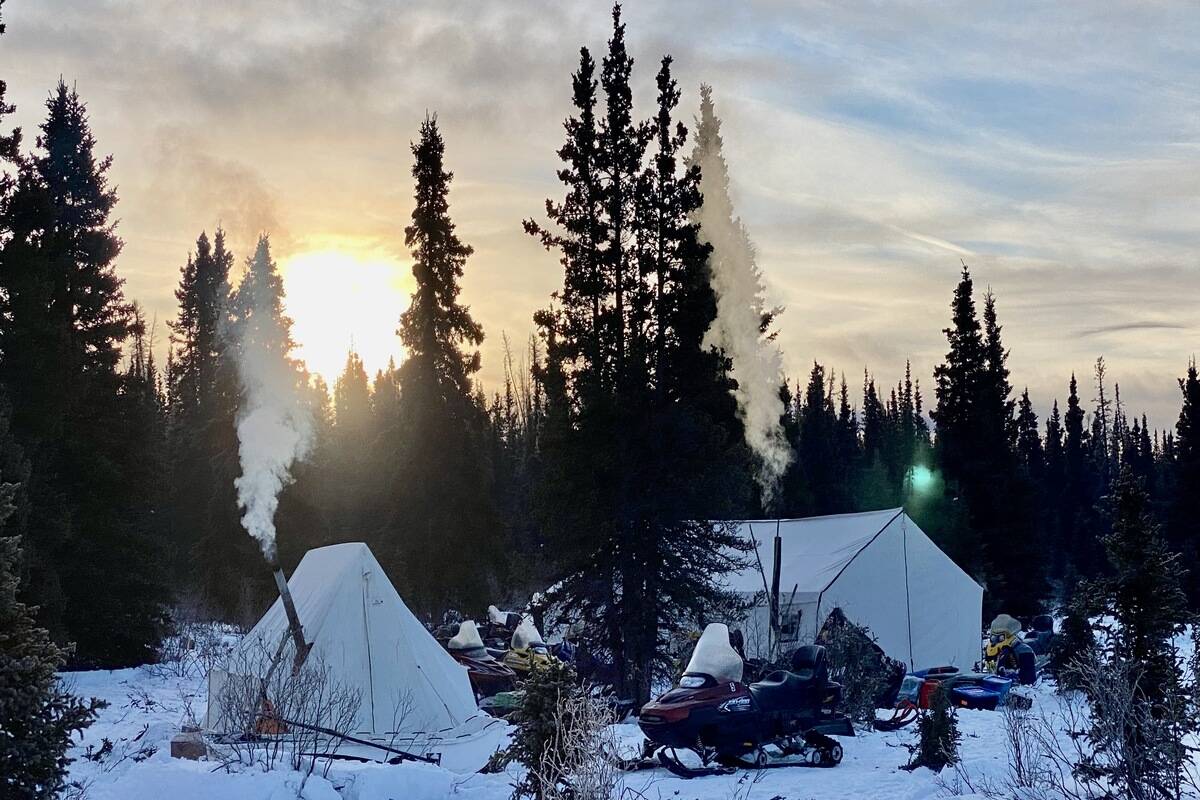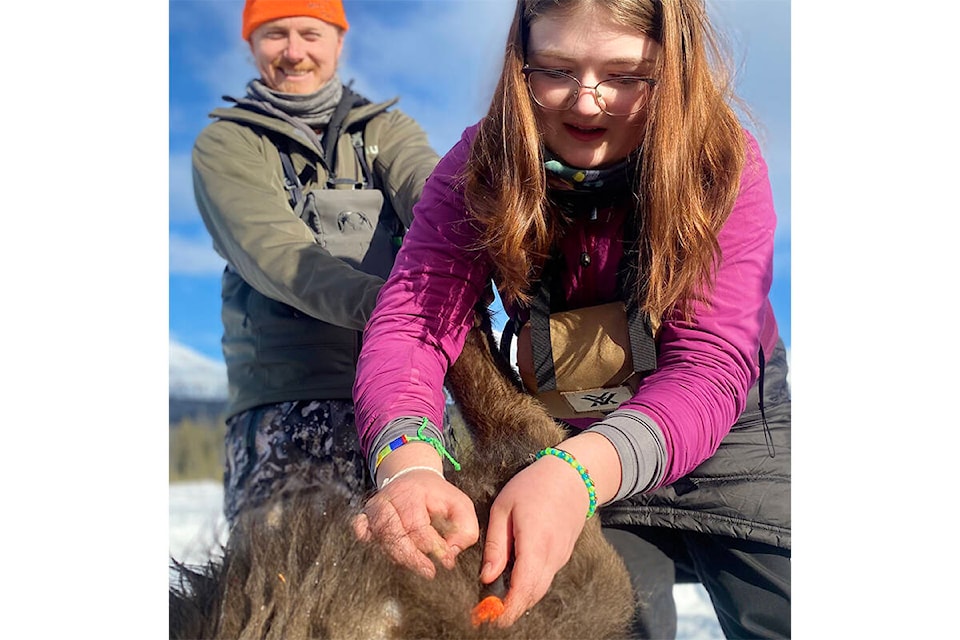About a dozen Whitehorse high school students went out on the range to learn about respectful bison hunting on the traditional territory of the Champagne and Aishihik First Nations last week.
The Porter Creek Secondary School students were joined by Jim Welsch, hunter education coordinator for the Yukon department of Environment, Elder Harry Smith, and volunteers from the Yukon Fish and Wildlife Management Board, who are experienced hunters and outdoorspeople, in the Kluane Lake and Kloo Lake region from Feb. 28 to March 4.
Snowmobiles had been trucked out to the site for the students to travel into the bush. They set up camp in the woods and slept in wall tents.
“This is this opportunity to teach kids about their connection with food and the opportunity to be on the land and be present and be moving around,” Welsch said.
“We’re some of the last people in the country that have this opportunity to go out and hunt and feed our families on a $10 bison tag.”
In the late 1980s, 170 bison were reintroduced to the territory as part of a national program to recover the endangered species, according to the Yukon government. Since then, the herd of large bovine with dark, shaggy hair has grown to an estimated population of 1,200 to 1,400 animals. One of the ways to limit the herd’s size is through hunting.

Welsch said a volunteer experienced hunter snuck up on a bison and made a “really good shot” on the first day of the field trip.
“That’s what we want to show the kids: to take the time to practice a lot, to be competent when they’re there, to minimize suffering,” Welsch said.
“It’s a sad moment, every time. But there’s also this kind of connection happening, and there’s kind of awakening in these kids of what it means to be a consumer, and what it means to eat meat.”
In the section on mandatory bison restrictions and harvesting in the Yukon hunting regulations summary, people can only hunt wood bison with a permit; gun specifications must be followed; bows must not be used; and anyone who has a bison harvest must report it within 10 days of the kill.
“Because we’re traveling with youth, the quality standard for safety is as high as we can make it,” Welsch said.
While an adult was the designated shooter, the students took the lead on meat care preparations and camp setup.
“We were lucky to harvest the bison with the group on the first day, which allowed us to take a lot of time to kind of clean the bison up and teach the kids about meat care, and take our time to pay some respect to the animals and permitted us to have a couple of days to work on skills on the land,” Welsch said.
Prior to the field trip, participating students took courses on navigation and snowmobile safety. In the bush, the students were taught about lighting fires, running wood stoves, and using ropes and knots while camping in the cold.
“I think they’re really kind of essential skills if you live in the North,” Welsch said.
For some of the students, Welsch said it was their fourth or fifth successful bison hunt with the school, so those older students taught some of the younger students how to field dress the animal and care for the hide and meat.
“Getting a bite on the first day allowed us to have time to hang the meat and then care for it to clean it up,” Welsh said.
Welsh said another goal is to learn about having minimal impact while leaving the area as unscathed as possible.
“On the last day, we kind of had a celebration with the group where we barbecued a bunch of the bison and the kids got to experience the full circle of what it means to go out and hunt and to harvest an animal and then clean it up and eat it,” Welsch said.
“The most amazing thing about this is how the kids have this natural sense of gratitude towards the animal.”
Contact Dana Hatherly at dana.hatherly@yukon-news.com
